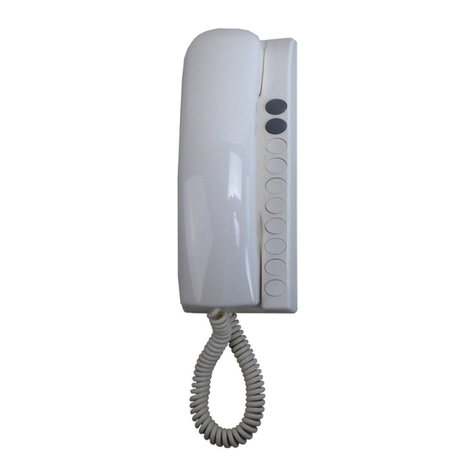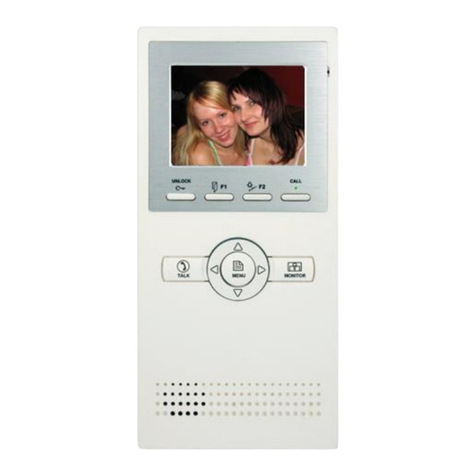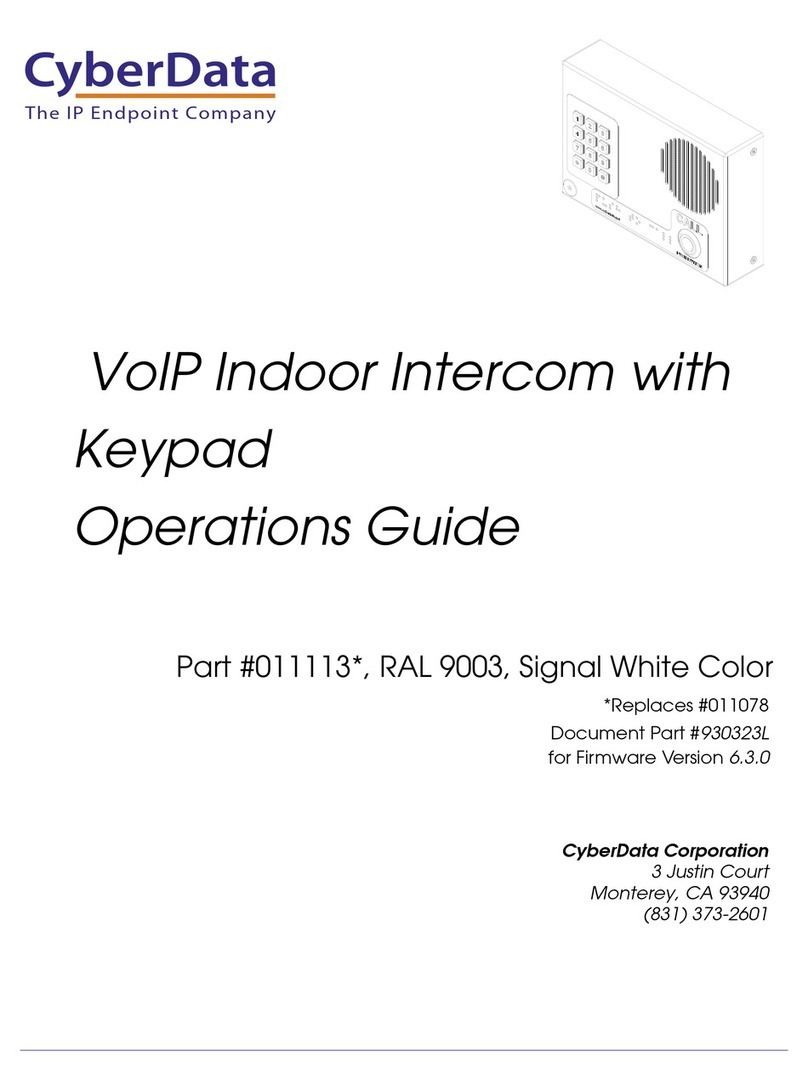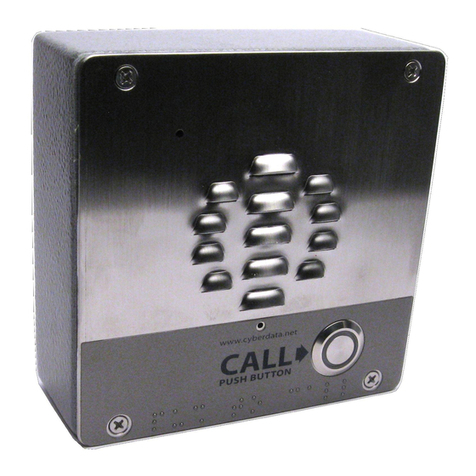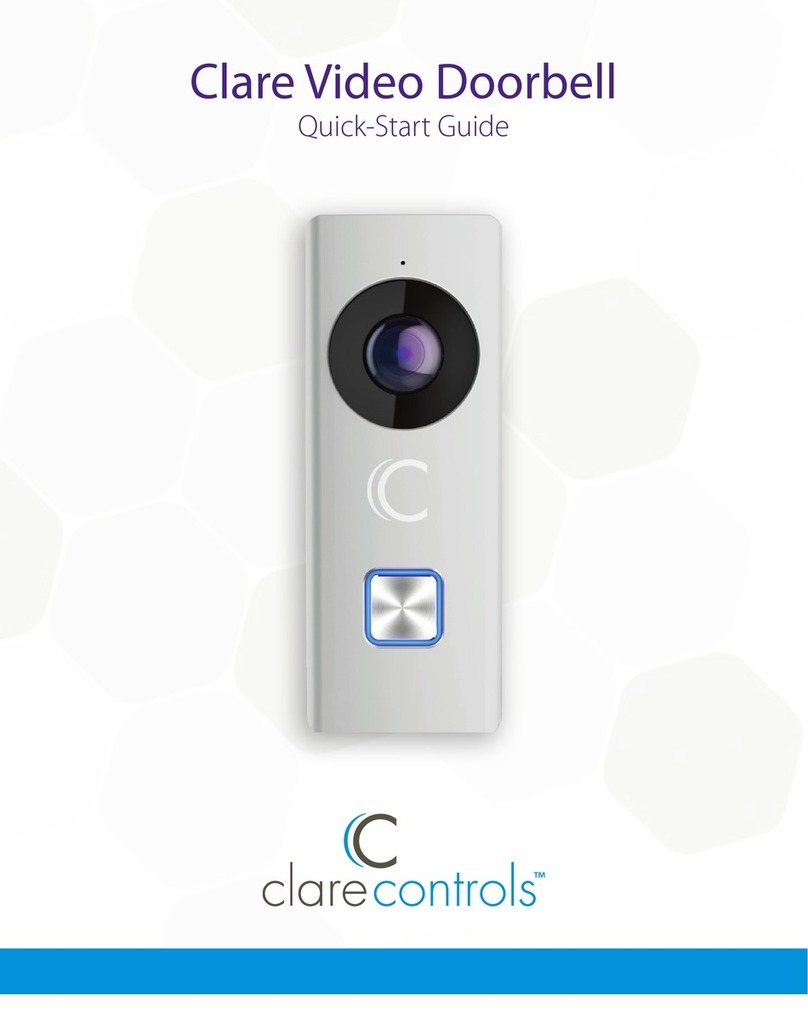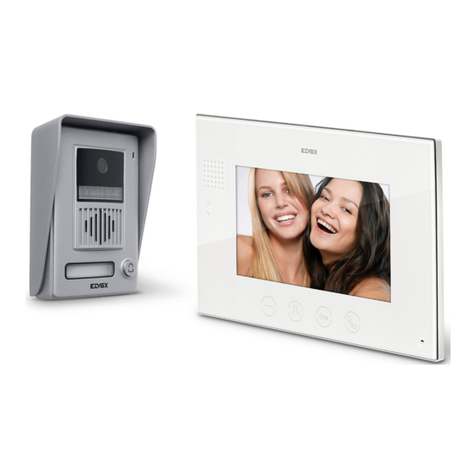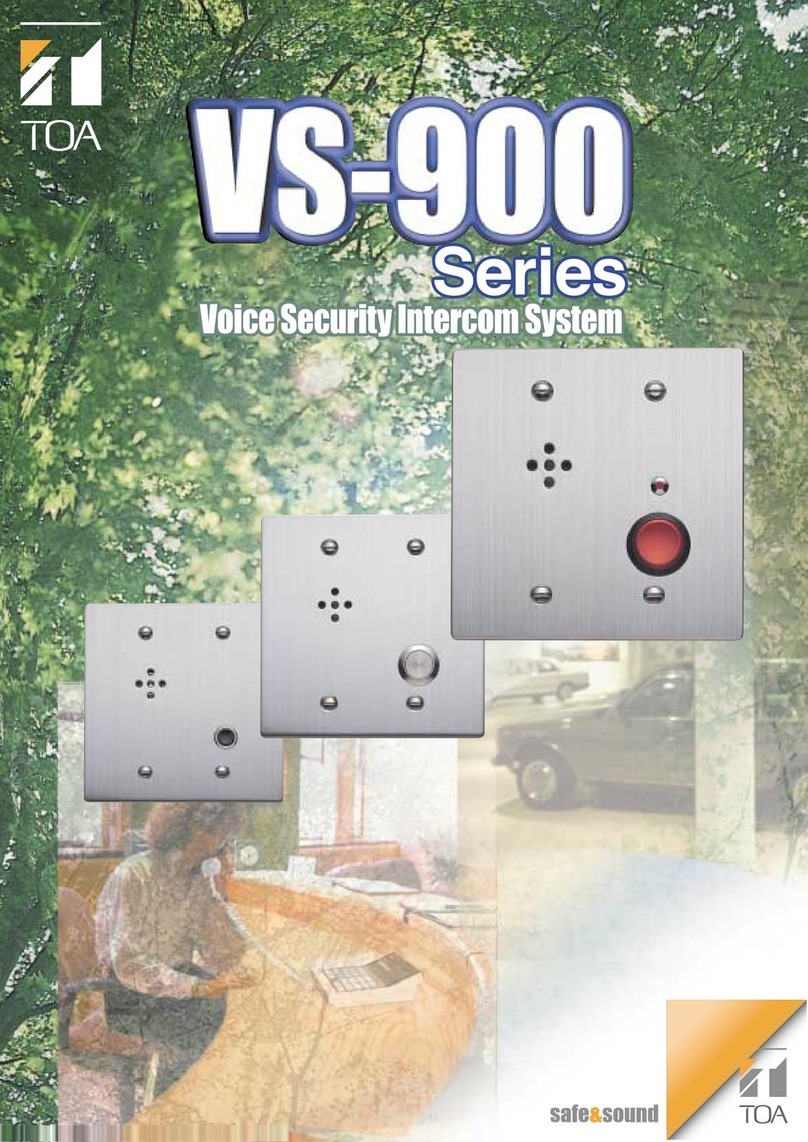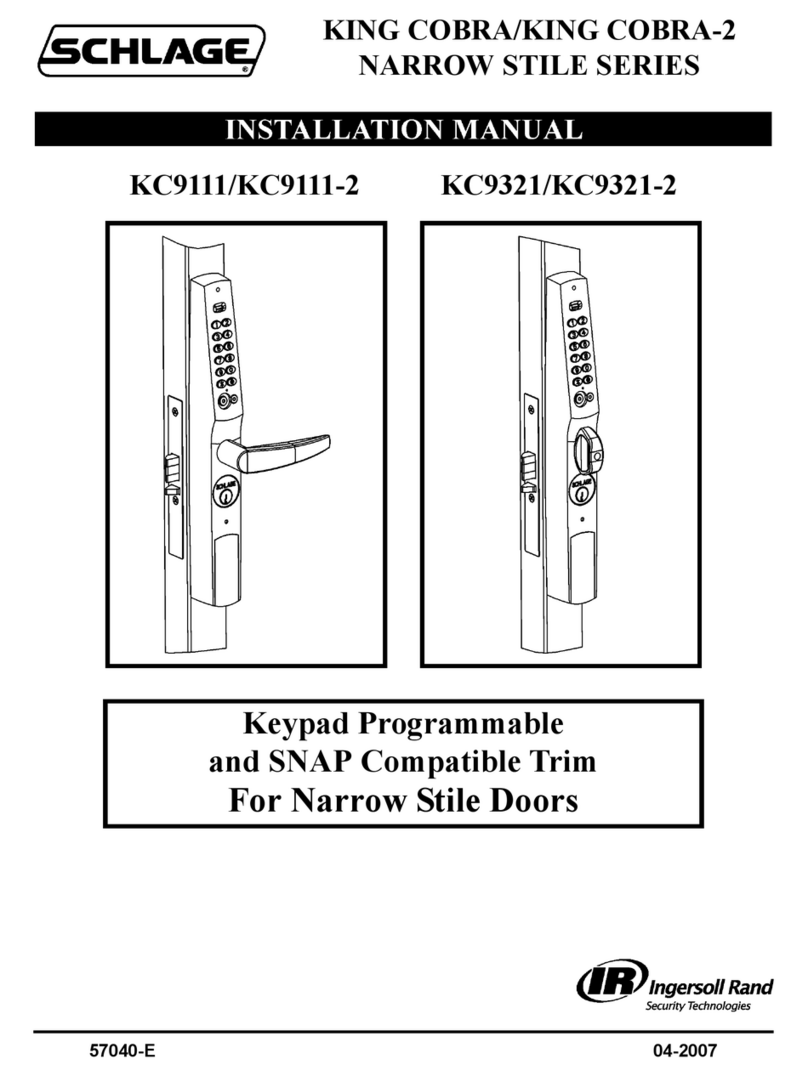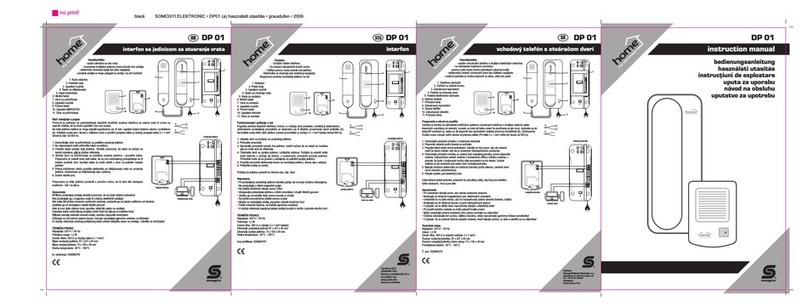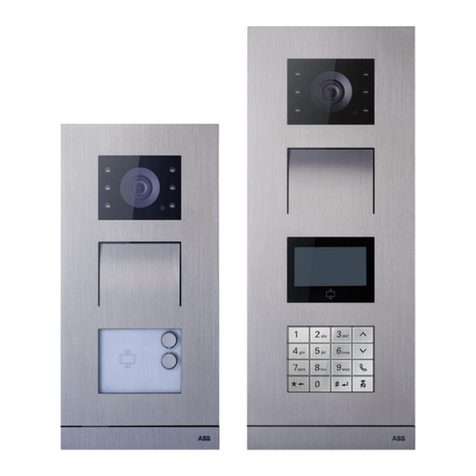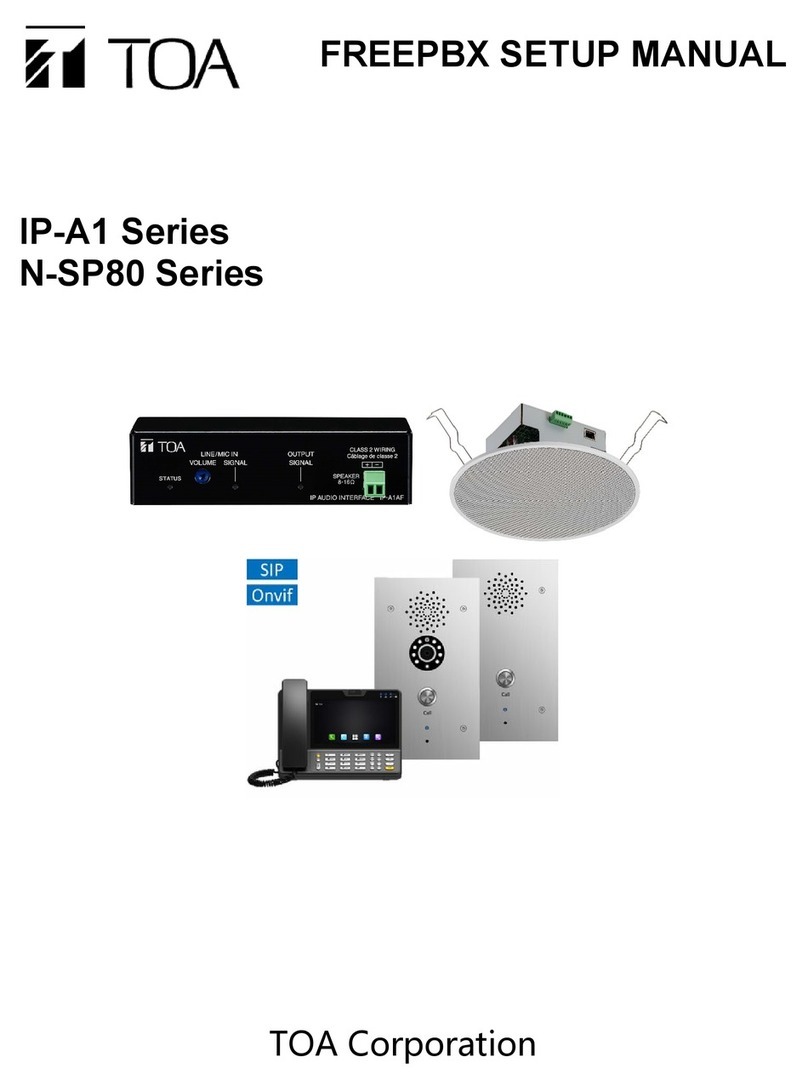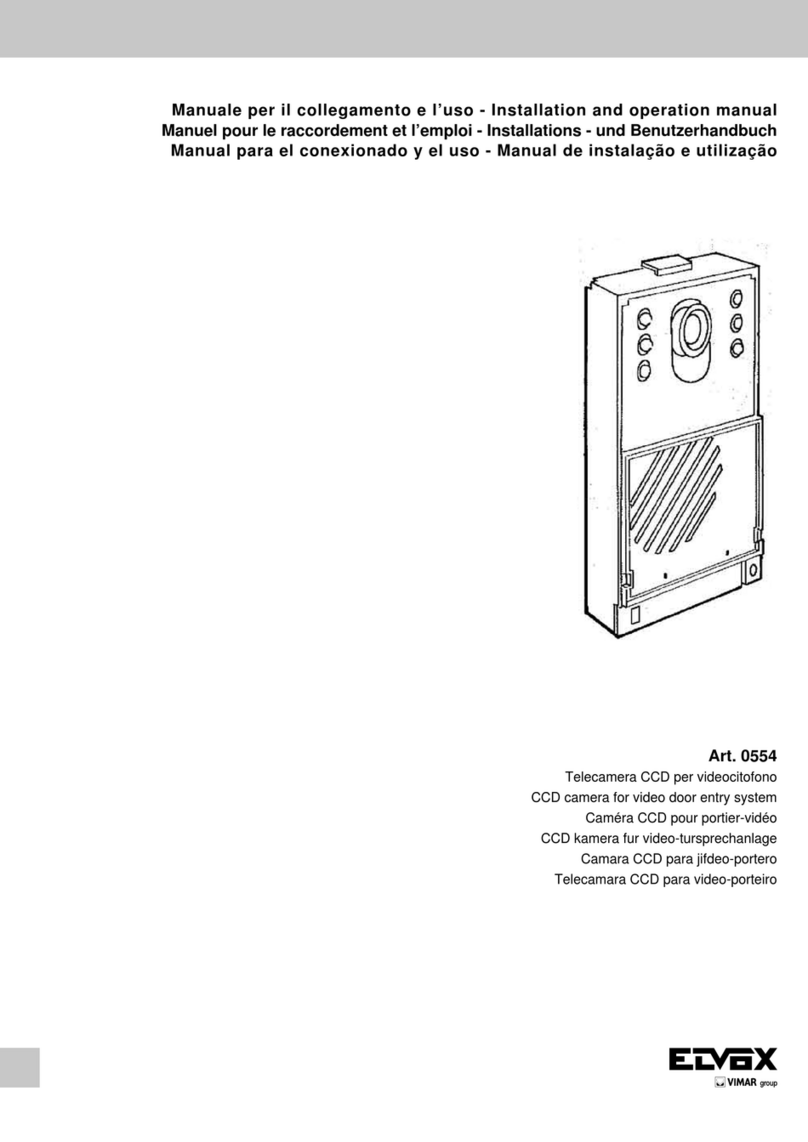ESTOM AS1-GSM User manual

AS1-GSM REV.1.1 01/02/2013
AS1-GSM
GSM based intercom and access control
Installation and user manual

2
Table of contents
1Functions..................................................................................................................................3
2Features...................................................................................................................................3
3Application area........................................................................................................................3
4Operation .................................................................................................................................4
4.1 Visitor mode.....................................................................................................................4
4.2 Listen-in mode .................................................................................................................4
4.3 Relay output control (gate opening).................................................................................4
4.4 Voltage output control (electric lock activation)................................................................4
4.5 Forwarding incoming SMS messages..............................................................................4
5Settings....................................................................................................................................5
5.1 Response SMS explanation.............................................................................................5
6LED indications ........................................................................................................................6
7Installation................................................................................................................................6
7.1 Mounting..........................................................................................................................6
7.2 Putting into operation.......................................................................................................6
8Wiring diagram.........................................................................................................................7
9 Surface mounting…………………………………………………………………………...………...8
10 Technical specification ............................................................................................................8

3
The AS1-GSM is an intercom unit which as a cell phone can call the owner’s mobile or landline
phone. By pressing the call button on the intercom, it makes the voice connection in a few
seconds, just like when talking via a conventional intercom system. This way it makes possible
for the owner to receive the visitor’s calls and talk to them at anytime and anywhere, even when
not at home.
The unit does not need internal handset, any special installation or complicated wiring, it needs
power only and an active SIM card.
1 Functions
•Intercom
•Listen-in mode
•Electric door lock control via DTMF codes
•Electric gate control by free call
•SMS forwarding
•Programming through SMS message
2 Features
•GSM communication in full duplex mode
•2 configurable phone number for communication
•4 configurable phone numbers for electric gate control
•1 relay output with independent N.O. contact, supports 1A@24V max. load
•12V/1A voltage output with short circuit and overcurrent protection for electric lock control
•Local control of the voltage output using a separate input
•Supports prepaid SIM cards by forwarding the received balance information in SMS
3 Application area
•Wireless intercom
•Gate/door opener
•Emergency call device

4
4 Operation
4.1 Visitor mode
When the visitor pushes the call button, the device initiates a voice call to the configured phone
number. If the called party accepts the call, the communication establishes for the configured
duration. During the call, the connection cannot be interrupted nor by making a call to the device,
nor by pressing the button again. The call is ended automatically when the configured
communication time expires, or the called party can hang up the call at anytime on his/her
phone. The call is ended automatically if the called party does not answer or is not available.
A new call is initiated only if the button is pressed again.
A call to the second telephone number can be initiated for 60 seconds after the first call is
ended, by pressing the call button on the intercom again. The maximum duration of the call is
the same as in case of the first call.
4.2 Listen-in mode
The intercom unit can be called from any phone number. In this case the unit accepts the call
without ringing and the voice connection establishes. The call can be ended on the caller’s
phone or by pressing the call button on the unit.
If the call is initiated from a phone number which is configured in the unit as gate opener
number, the device will consider the call as a gate opening call. In this case voice
connection is not established, but the relay output is activated. To make a “listen-in” call
from such phone number, use the #31# code in front of the number, this hides the caller’s phone
number (e.g.: #31#0036301234567).
4.3 Relay output control (gate opening)
The unit can activate an independent, normally open relay output by free call, using caller
(phone number) identification. Up to 10 user phone numbers can be configured for this function.
To use this function, caller identification service should be activated at the GSM service provider
on the SIM card inserted in the unit, as well as the caller should send the ID (phone number)
when calling. When receiving a control call, the unit identifies the caller, rejects the call and
activates the relay output.
4.4 Voltage output control (electric lock activation)
The voltage output can be activated for the configured duration during the phone conversation.
This makes possible to control directly an electric lock. The activation of the output can be done
by the called party by pressing any number or character key on the phone, thereby sending a
DTMF code. The voltage output can also be activated locally, by closing the “INPUT” input on
the unit. In this case the device will activate the output still for the configured duration. In case of
a short circuit or overcurrent the output turns off, then it operates again after the termination of
the fault.
4.5 Forwarding incoming SMS messages
The unit forwards the SMS messages received on its SIM card (e.g. balance information in case
of a prepaid card) to the phone number set with the TEL command. After forwarding, the
received message is deleted from the SIM card. If there is no phone number configured, the unit
deletes the incoming messages without forwarding. A forwarded SMS message looks as follows:
SMS forward from „the sender’s phone number”:…the forwarded message...

5
5 Settings
Configuration of the unit is possible by sending the appropriate commands in SMS to the
module’s phone number. It is possible to send more commands (settings) in the same SMS, but
the length of the message must not exceed 140 characters! Each message must begin with the
password using the PWD=password#command and each command must end with #character,
else the module does not apply the modifications. The following table contains the configuring
and query commands:
Configuration commands
PWD= 1234#Password for programming, default setting:1234
PWC=new password#Changing the password. The password is a 4-digit number.
RESET#Resetting the settings and the password to default.
TEL=phone number#
Setting the primary phone number to be called when pressing the
button (in international format)
TEL2=phone number# Secondary telephone number in case the first telephone number
is unavailable.
TIME=duration#Maximal duration of the conversation. (60-600 seconds)
Default setting: 60 seconds
RTIME= duration#Duration of the relay output activation.
(1-100 seconds)
Default setting: 3 seconds
VTIME= duration#Duration of the voltage output (- OUT +) activation.
(1-100 seconds).
Default setting: 5 seconds
RTEL= phone number#Setting the phone numbers for relay output activation.
(max. 4 user)
STATUS?#Query of the settings and the phone numbers set for relay output
activation.
Example: PWD=1234#TEL=00363012345678#TIME=120#RTEL=00363012345678#
5.1 Response SMS explanation
After sending the configuration SMS, the unit sends back two SMS messages containing the
modified setting and the phone numbers set for relay output activation. It sends the same
messages when querying the status with the STATUS?#command, as shown in the following
example:
TEL: 00363012345678 the phone number called on button pressing: 00363012345678
CALL TIME: 120 conversation duration (limited to 120 seconds)
SIGNAL: GOOD GSM signal (BAD / GOOD / EXCELLENT).
If the indication is BAD, find a more suitable place for the unit or
the GSM antenna, or a higher gain GSM antenna is necessary.
RTEL: 00363012345678 phone number(s) authorized to activate the relay output.

6
6 LED indications
LED Color
GSM OK green Is lit if the unit is connected to the network and field strength
is appropriate.
Appropriate field strength: 2 (on the scale of 0-5)
GSM / SIM ERROR red
Is lit continuously if the unit is not connected to the network.
The following cases are possible:
- the GSM antenna is not connected or is faulty
- the SIM card is not inserted, or PIN code request is not
deactivated, or the card is faulty.
CALL IN PROGRESS green Call or conversation is in progress.
VOLTAGE OUT red Voltage output activated (e.g. electric lock control)
RELAY CONTROL red Relay output activated (e.g. gate control)
7 Installation
7.1 Mounting
•Measure the GSM signal with your mobile phone. It may happen that in the desired place of
installation the signal strength is not satisfactory. In this case you can move the unit or the
GSM antenna in a more suitable place before installation.
•Do not mount the unit where it could be affected by strong electromagnetic disturbances.
•Do not mount the unit in wet places or in places with a high degree of humidity.
•Connecting the antenna: the GSM antenna can be connected to the SMA connector. The
antenna supplied with the unit provides good transmission under normal reception
circumstances. In case of having signal strength problems or/and wave interference (fading),
use other type of antenna or find a more suitable place for the unit.
•Inserting the SIM card: turn the SIM card with the metallic contact surface downwards
towards the panel, and the cut corner should point towards the panel’s center. Insert the
card in this position in the socket and press until it clicks. To remove the SIM card, push it
towards the socket then pull it out.
7.2 Putting into operation
•Disable PIN code request, voicemail and missed call notification service on the SIM card.
•Enable caller identification and caller ID sending service on the SIM card at the GSM service
provider.
•Make sure the SIM card is inserted properly into its socket.
•Make sure the antenna is fixed properly into the SMA connector.
•Make sure the wiring is done as shown in the wiring diagram.
•Power up the unit (12-24V AC/ DC). Make sure the power supply is sufficient for the
operation of the unit. If operating from a 16V AC transformer, the necessary current is min.
300mA (5VA).

7
8 Wiring diagram
1. Call button input
2. Local input for voltage output control
3. Relay output - normally open contact (max. 24V DC/1A)
4. Voltage output 12V DC/1A
5. Supply voltage input 14-24V AC/DC
6. Speaker output
7. SIM card socket
8. GSM antenna connector (SMA type)
9. Status indicator LED’s
10. Microphone input
11. USB connector (only for maintenance)

8
9 Surface mounting
10 Technical specification
•Supply voltage: 12-24V AC/DC
•Nominal consumption: 100mA
•Maximum consumption: 400mA @ 12VDC, 200mA @ 24VDC
•Max. load of the relay output: max. 1A @ 24V DC
•Voltage output / max. load: 12V DC / max. 1A
•Operating temperature: -20ºC - +70ºC
•Transmission frequency: GSM 900/1800 MHz (GSM 2G network)
•Contents of package: AS1-GSM unit, GSM antenna, security screws
•Warranty: 1 year
Table of contents
